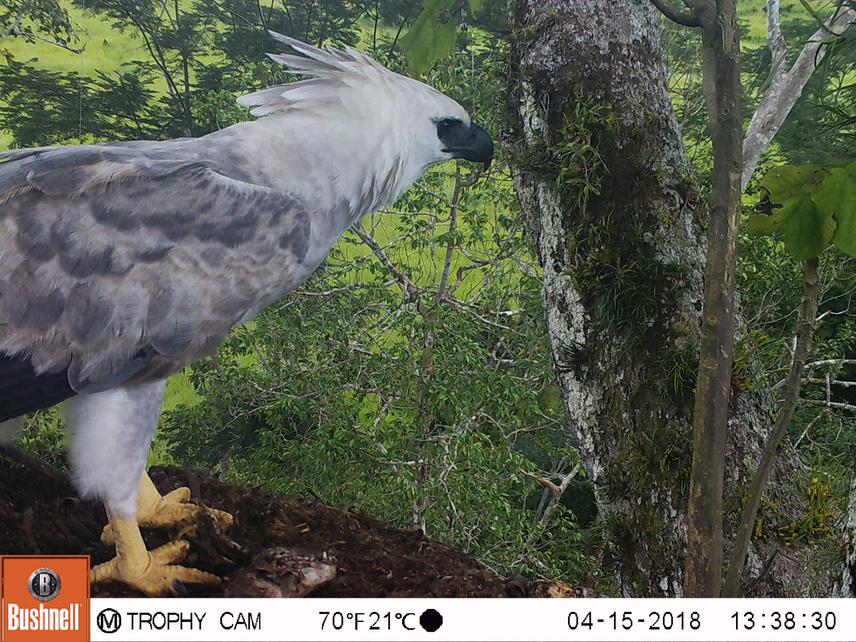Social media featuring the project.
Fledged Harpy Eagle eating baby peccary at nest
20 Sep 2017 Mato Grosso, Brazil, Central and Latin America Birds | Conflict | People | Ecotourism
Apex predators are widely considered as keystone species, and are threatened worldwide. The Harpy Eagle is the world’s largest raptor, is considered a flagship species for Amazonian conservation, and is threatened by habitat loss and retaliatory culling for depredation of livestock. In this study, we have two key goals: (a) to collect uniquely-detailed, never-before-assembled, fine-grain data on Harpy Eagle feeding ecology and (b) to test the hypothesis that our network of local nut collectors can turbo-charge our research project to reach a critical mass of protected nests of prehabituated eagles that would then attract major investment in ecotourism. Such investment can result in value-added non-extractive revenues to foot the conservation costs of Amazonian forests, thereby leading to a sustainable future for this network of Harpy nests and the forest habitats on which they depend.

Our goal is to promote Harpy Eagle conservation through strategies that benefit local people and can be replicated throughout the species distribution, by implementing the following:
(1) Solve Harpy Eagle-Human conflict through the study of environmental dynamics of livestock predation by eagles, therefore learning how to avoid preventive and retaliatory killing of Harpy Eagle by locals;
(2) Find enough Harpy Eagle nests to reach a critical mass of active, accessible, protected Harpy nests that could then attract major investment in sustainable Harpy Eagle tourism, adding concrete value for the preservation of the species and their forest homes.
The Harpy Eagle is considered a flagship species for Amazon conservation, and is threatened by habitat loss and shooting in retaliation for its killing small livestock in backyards of homesteaders. In this study, we have two goals:
(1) To collect uniquely-detailed, never-before-assembled, fine-grain data on Harpy Eagle feeding ecology and see how the dynamics of its feeding habits are related to landscape features (secondary forests, pastures, manmade facilities, etc.). Consequently, we will be able to predict and thus prevent predation of domestic animals. As retaliatory and preventive killings are the main drivers of declines of Harpy Eagles, this is a sound research strategy for conservation of the species.
(2) To test the hypothesis that our network of nonhunting forest informants (the first in the history of the Amazon) can turbo-charge our research project to allow us to reach critical mass of active, accessible, protected nests of eagles that would then attract major investment in sustainable Harpy Eagle tourism. Such investment could result in adding enormous amounts of non-extractive value to intact rainforest and wildlife, thus leading to a sustainable future for this network of Harpy nests and their rainforest home.
Hundreds of thousands of people in the Amazon Forest want more stable and prosperous lives, and the means by which they will achieve this will determine nature’s baseline conditions across most of this ecosystem in the future. Our work will implement the region’s potential to benefit from Harpy Eagle nests as an ecotourism product associated with the Amazon forest, providing a visible and concrete financial value for habitat preservation.
Social media featuring the project.
Fledged Harpy Eagle eating baby peccary at nest